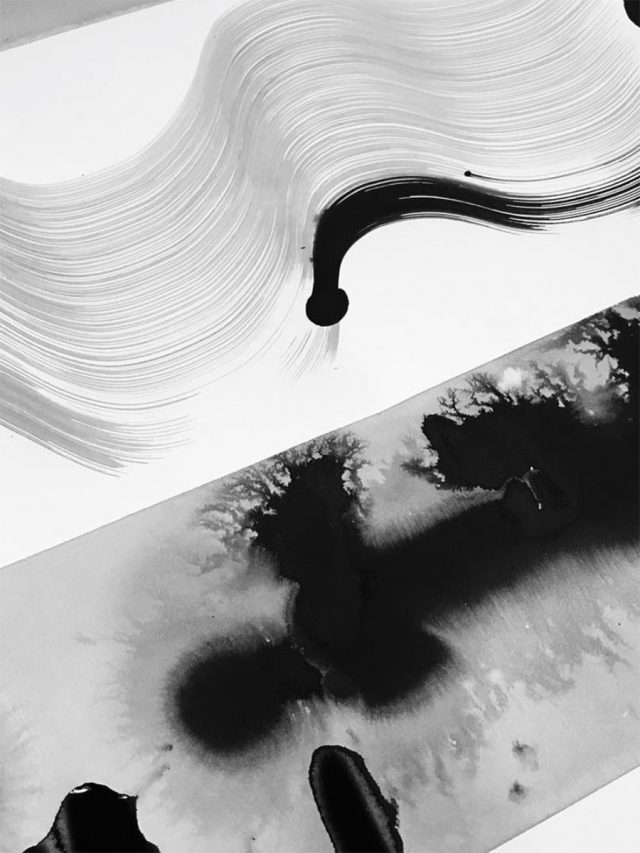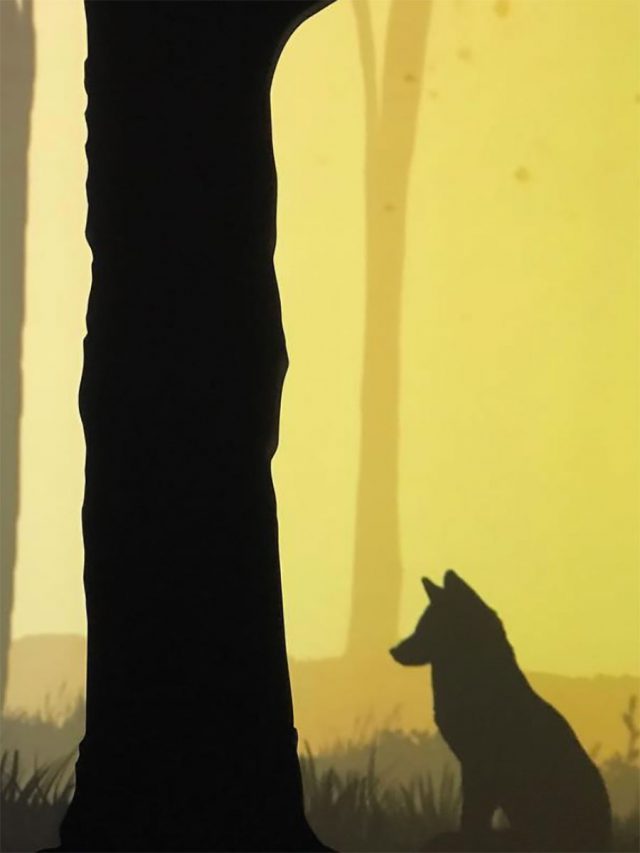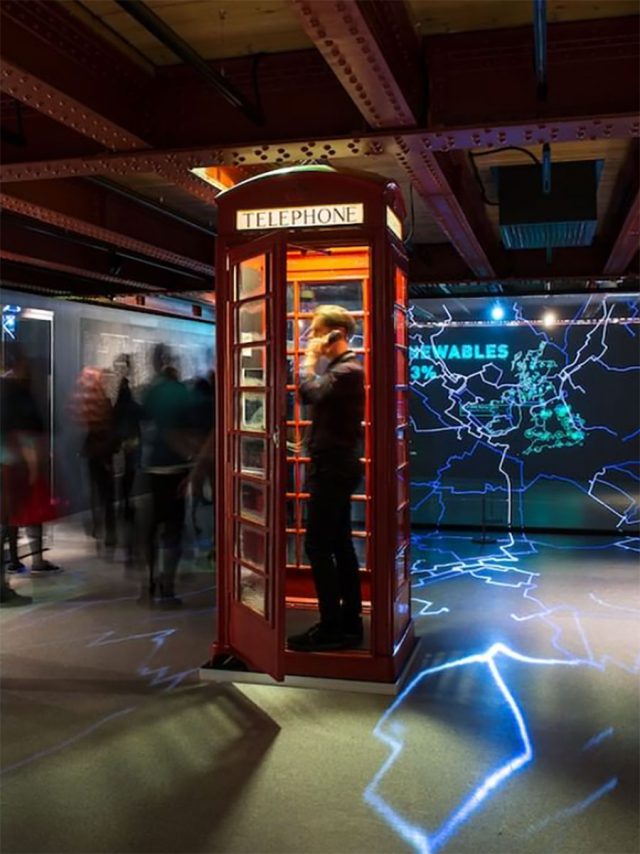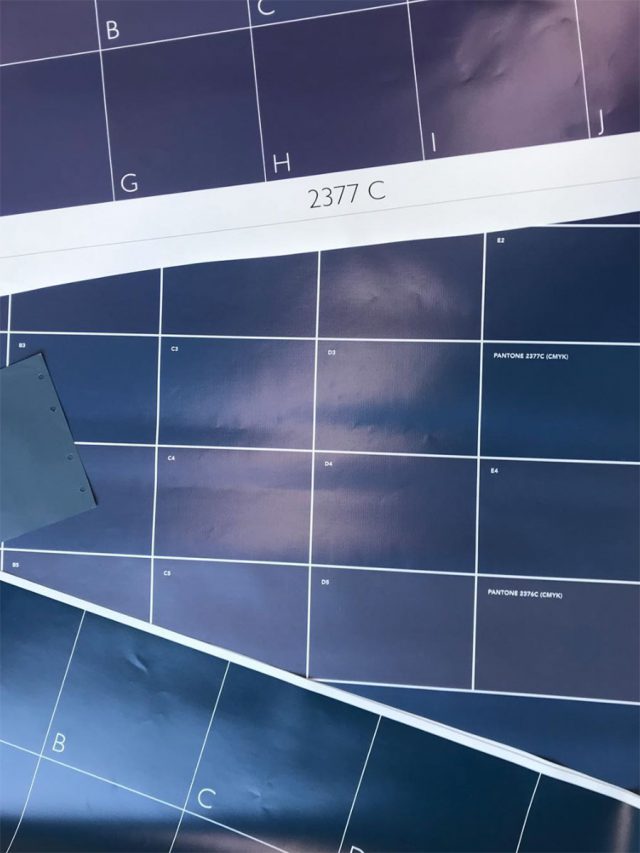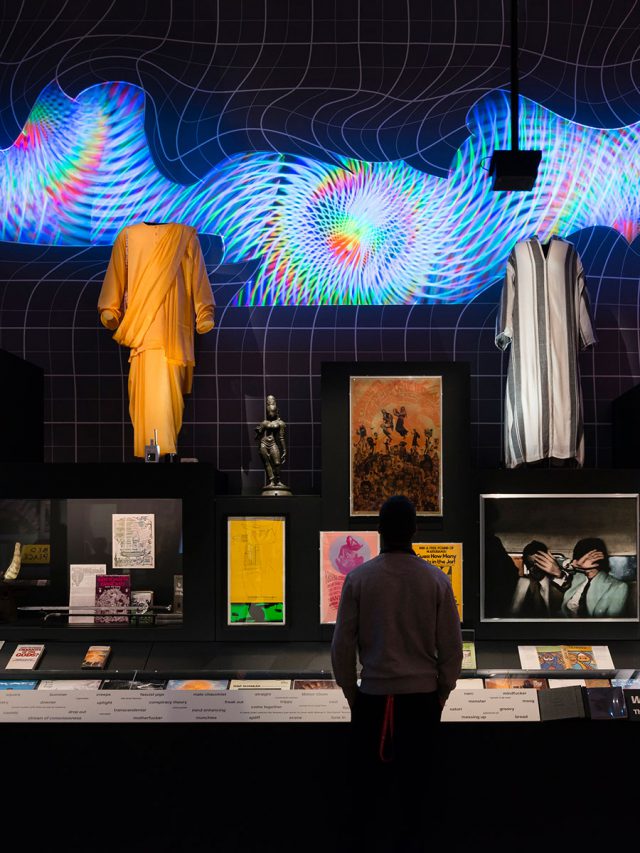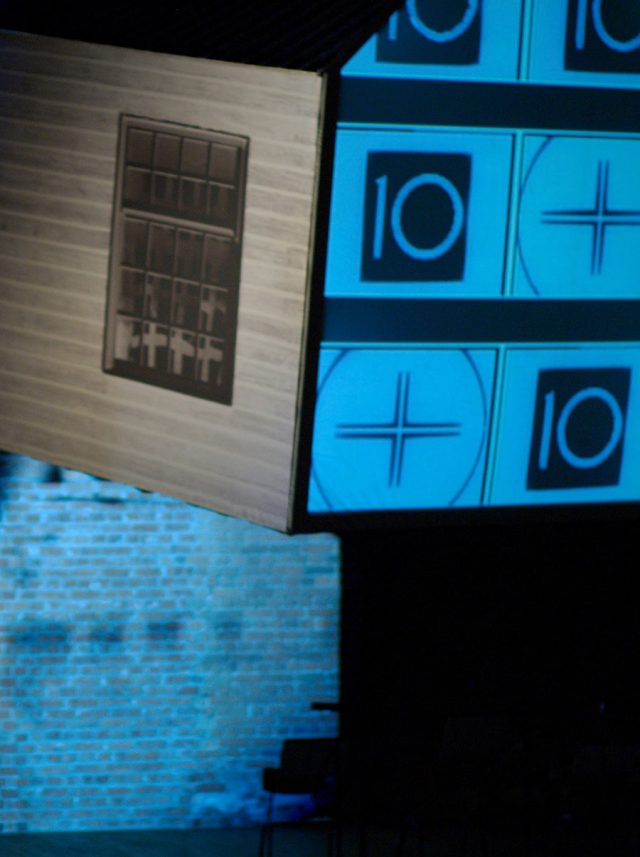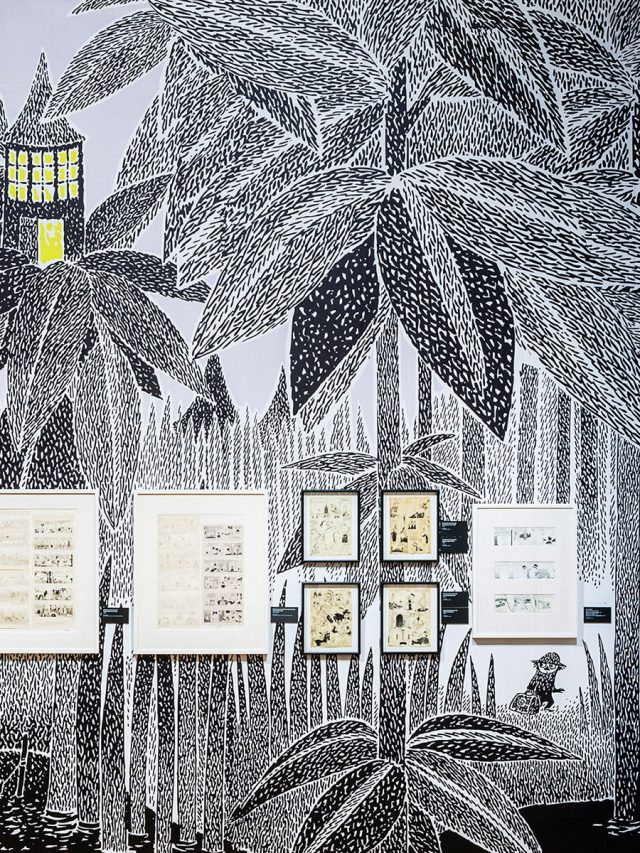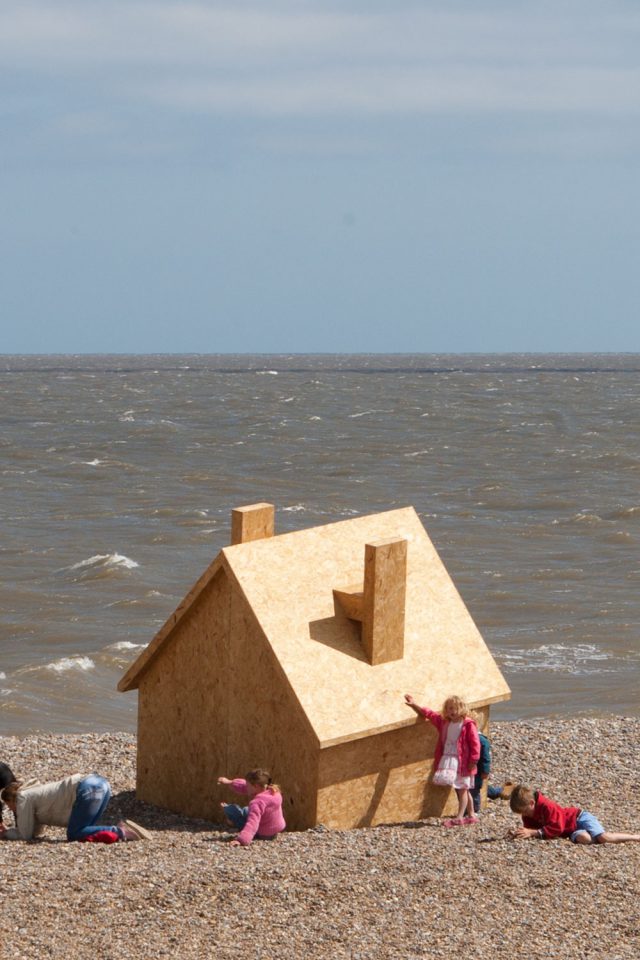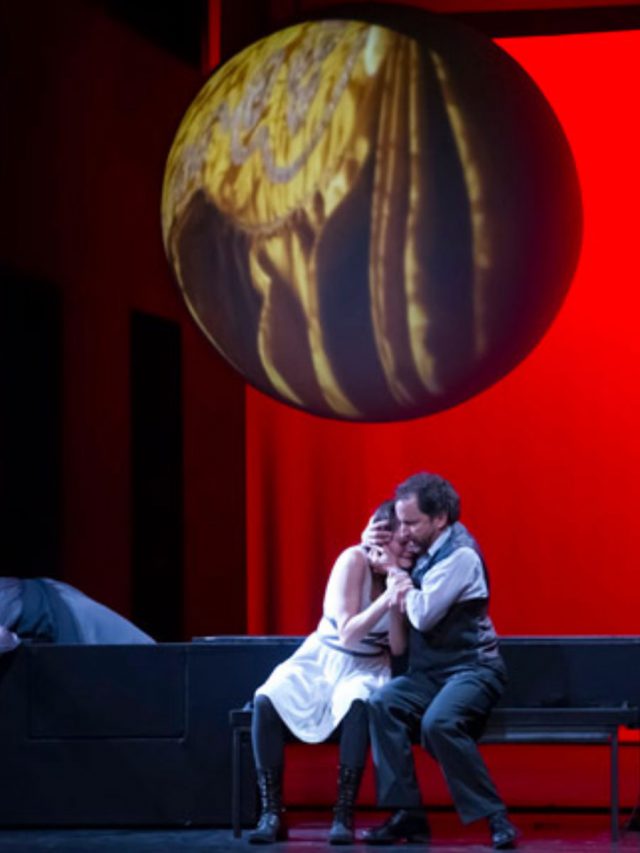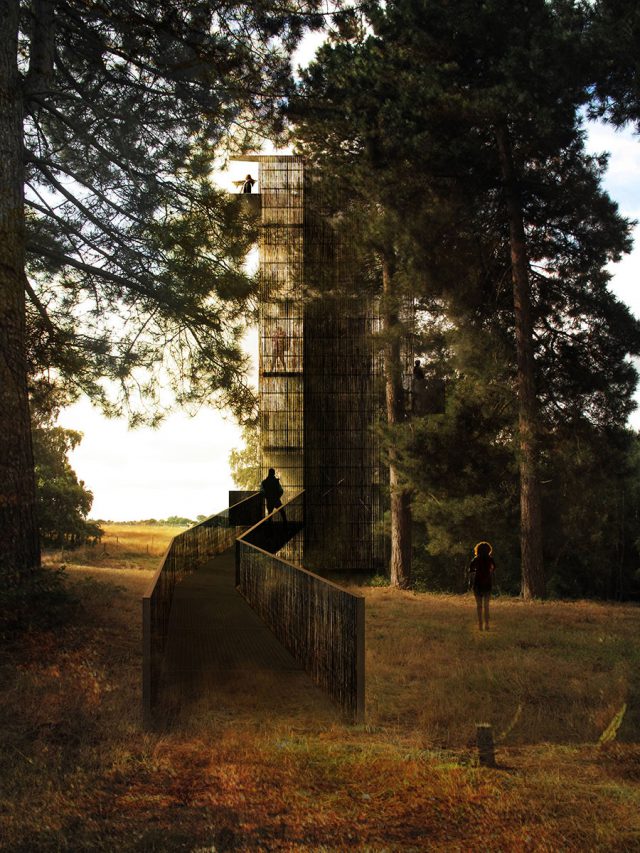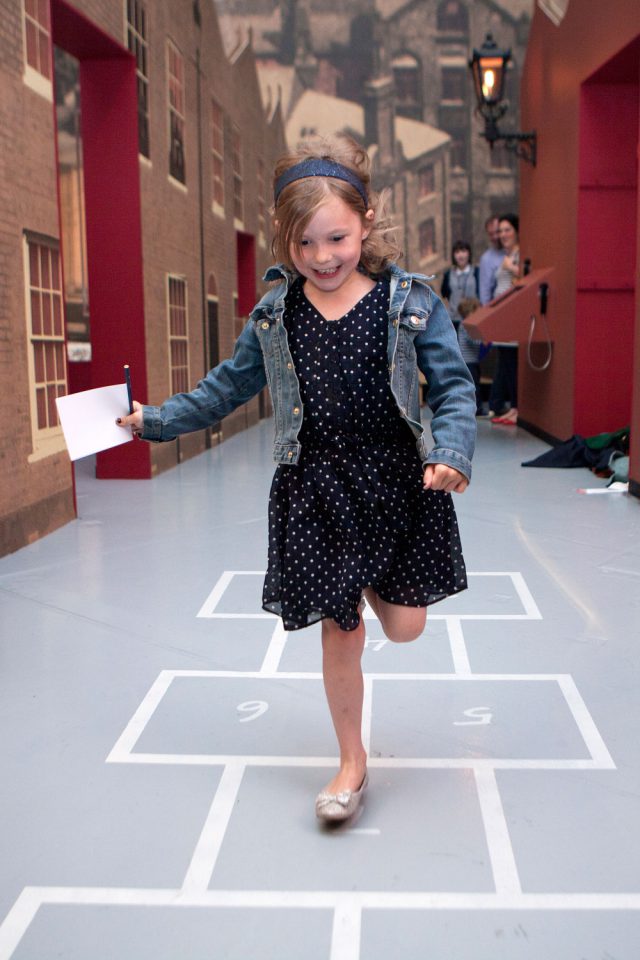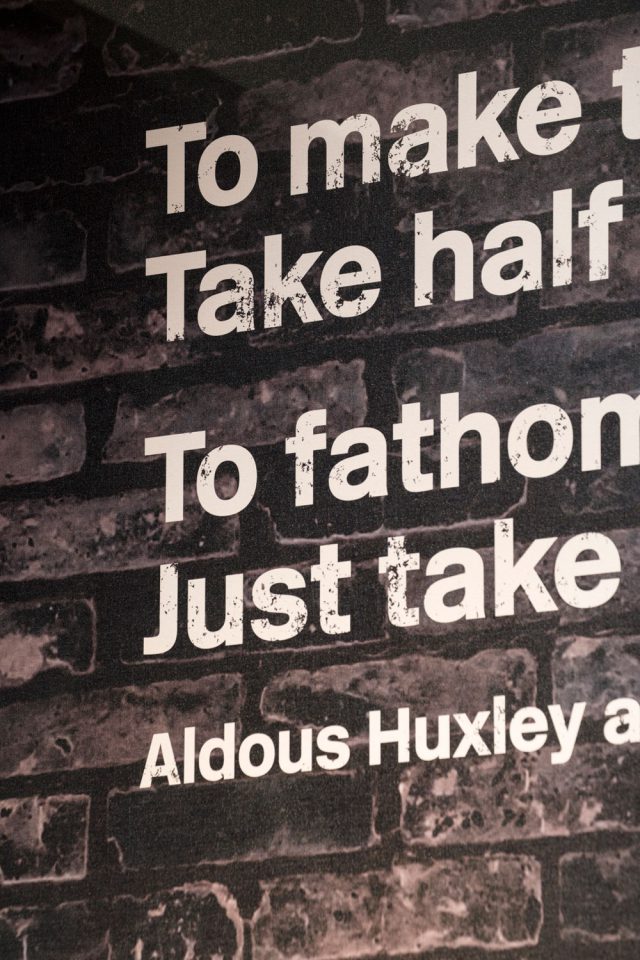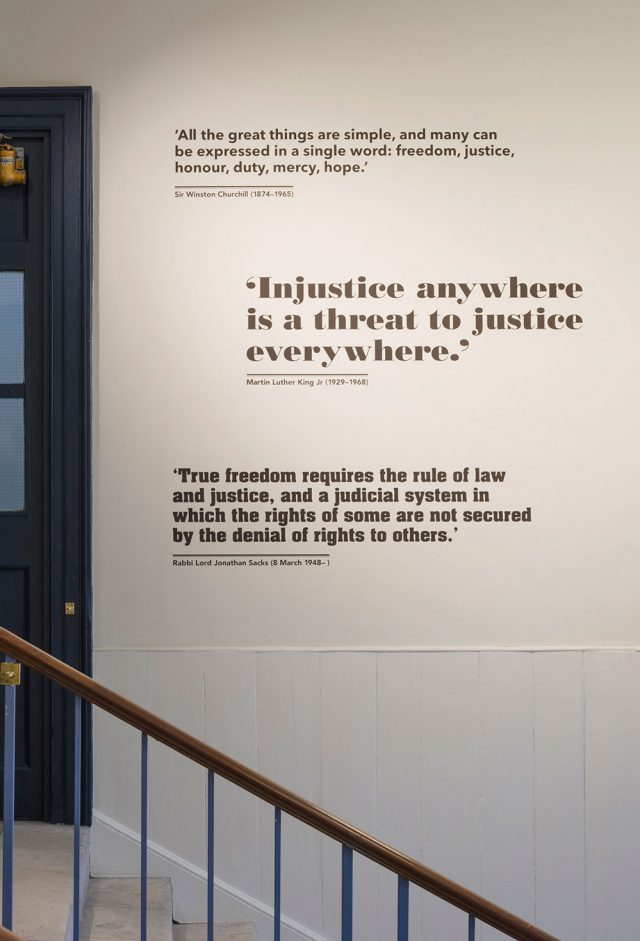-
![]()
Experimentation
Craft is part of our culture and central to our way of working, so is experimentation. Working to develop a new brand, our graphics team experimented with ink and paper to make connections between landscape, writing and poetry.
-
![]()
Light
Light is a key component for creating drama in our work. It creates feelings and moods, and accentuates objects and details. Getting light right is essential.
-
![]()
Typography
Each project needs its own identity. We created a bespoke typeface for our exhibition Hooked, the first exhibition at London’s new Science Gallery. The ‘O’ on the front façade became a popular selfie moment.
-
![]()
Narrative
The objects tell a story – we are making places that let the objects breathe and you can see their detail and character. Here is a key statue from our Sir Joseph Hotung Gallery of China and South Asia at the British Museum.
-
![]()
Perspective
Our work often explores different perspectives and new ways of perceiving something. In Life in the Dark at the Natural History Museum, the letters of the titles were created through light and shadows.
-
![]()
Dialogue
Dialogue plays a key role in how we work. Ideas are not developed in a vacuum, but grow from two-way conversations, listening and workshops.
-
![]()
Texture
Sampling is an important part of our work. We test materials and textures to make sure they are right. For Hooked at the Science Gallery, we created large curtain graphics. We trialled printing on many different textures to make sure the text was clear and easy to read.
-
![]()
Studio
Our studio is full of amazingly creative and talented people that shape all our projects. Our studio is also home to plenty of examples from previous design processes. They inspire new projects and future thinking.
-
![]()
Surface
Our buildings and exhibitions let surfaces of materials and light come together to shape the environment. We enjoy how an exterior landscape can become part of a room. This is Dove Cottage in the Lake District, one of William Wordsworth’s homes, where we are working to transform the experience.
-
![]()
Animation
Sometimes, a moving surface tells a story in a more evocative way. In Life in the Dark at the Natural History Museum, a fox followed visitors as they began their journey through the dark.
-
![]()
Multi-sensory
Exploring with all your senses is a powerful experience. We consider the senses when we design and think carefully about what people can hear, touch, smell, listen, see and do.
-
![]()
Graphic Design
We consider graphics and 3D design at the same time, so they are seamlessly integrated. For The Great Exhibition of the North, we made large-scale bold graphic surfaces. They told different stories and formed the walls and carved the spaces within the Great North Museum, Hancock.
-
![]()
Colour
They may all look blue, but only through rigorous testing can we get the nuance of a colour absolutely right.
-
![]()
Visualisation
By visualising our ideas, we can test different materials to see how textures work in a particular context. Here, the façade is dependent on the choice of brick but is also shaped by the relationship to the rhythm of spaces and shadows. A visualisation helps us determine the relationship.
-
![]()
Structure
We enjoy playing with structures. They can be part of the narrative at the same time as they hold the narrative. They can include light, content and showcases for object displays. In Electricity, we created structures inspired by pylons.
-
![]()
Storyboard
Workshops form the basis for our early work on a project. We explore a topic broadly until we find a clear path for the concept design. That journey is captured through storyboards and timelines that express what people will see, do, think and feel.
-
![]()
Immersion
We enjoy creating immersive moments. They help us set a tone, a mood and a pace, and create environments that spark wonder. For Utopia, we created an infinite landscape with mirrors and printed metal fabric. A visual idea that was also repeated in the design and branding.
-
![]()
Multidisciplinary
Our exhibitions are often a multidisciplinary collaboration – between film, sound, objects, lighting, graphic design, architecture and exhibition design. In this moment in You Say You Want A Revolution? for the V&A, we needed to compose all the elements together, like a theatre director, so they felt as if they were one design voice.
-
![]()
Detail
In all our work, we use materials to tell a story. Every detail counts. Here, a lightbulb sits on a clear Corian surrounded by recycled plastic that forms a textured pattern. It feels like a buzzing current is running through it.
-
![]()
Place
When the spirit of a place is at the heart of a story, our work brings out the essence of that place. Either in the place itself, enhancing the narrative that is already there, or by bringing it to life elsewhere.
-
![]()
Movement
We work with materials, form and light to encourage certain movement in and through the spaces we design. Vertical timber slats give the impression of vertical light that lead people up and down the stairs.
-
![]()
Thresholds
We often work with thresholds. They represent the beginning of something or the transition from one thing to another. They help us mark transitions in a spatial narrative drama, a point where the story changes.
-
![]()
People
We work with theatrical techniques to put people at the heart of our story-telling. We set up scenarios that allows people to meet people. A voice can be listened to and a projection of a person gives movement and a sense of a room being used.
-
![]()
Theatre
Creating surfaces that move between graphics and film can give movement to performance. A house ¬– part printed, part projected ¬– became the backdrop to an opera. Throughout the performance, it slowly changed.
-
![]()
Technology
We enjoy exploring new technology. Both as a way develop our design work and as a way to find new methods for connecting people with content. In Ancient Lives at the British Museum, we used CT scanned data and interactive technology to allow people to discover ancient mummies.
-
![]()
Landscape
Our work often takes inspiration from the wider landscape our designs and architecture exist within. The texture, form, colours, light and movement of the landscape make a mark on our thinking.
-
![]()
Audience
We create spaces with people in mind. Our music venue spaces come alive when they are full of people, music and lights. We create the infrastructure to allow the experiences to happen.
-
![]()
Scale
Scale can help us tell a story. In the Tove Jansson exhibition at the Dulwich Picture Gallery, we used her beautiful drawings large scale on walls. It allowed people to see the intricate details of her work.
-
![]()
Playfulness
This cupboard system is a way of keeping away storage, whilst enabling some favourite objects on display.
-
![]()
Storytelling
Storytelling is central to our work. The Way to the Sea was a devised theatre project. We created a narrative that ran through a village in Suffolk. A series of installations were used to unfold the story and the performance.
-
![]()
Production
We design through creating samples and prototypes. On this project, we tested many black stains and surface treatments on timber to get the quality of finish just right.
-
![]()
Film and animation
A graphic animation helps us give detail and context. In our exhibition Hut 11a at Bletchley Park, we use animation to tell the story of the build-up to building the Bombe Machine. The style and colours of the animation are carefully matched to the objects on displayed.
-
![]()
Context
Our architecture can translate the context a museum sits within and bring it inside the museum. At the National Waterways Museum, we designed a new entrance that brings the light into the heart of the building and creates a clear connection to the water.
-
![]()
Drama
We created a series of films for a theatre production in Mexico. They acted as dramatic storytelling devices – sometimes like a thought bubble, sometimes an emotional counterpoint to the actors on the stage.
-
![]()
New perspectives
Our viewing tower at Sutton Hoo allows helps to tell the story of a wider landscape. By giving visitors a new raised viewing point, we help visitors to make their own connections between the landscape and the history within it.
-
![]()
Model making
A physical model is sometimes be the clearest way to communicate our ideas. They allow us to move things around and helps us test options.
-
![]()
Materials
We enjoy carefully collating material so that they resonate together. This is a combination of floor, wall and graphic routed images.
-
![]()
Attention to detail
We find interesting details in museum objects and stories, and incorporate them into our designs. Here, the dials and mechanisms of the Bombe Machine, becomes a detail in our exhibition design at Bletchley.
-
![]()
Interactivity
Interactivity adds another dimension to storytelling. By touching, doing and testing, people can explore a story in a hands-on way.
-
![]()
Play
Our exhibitions often form the background for exciting spaces to play. In From Street to Trench we designed a Manchester street that contained objects and stories. It was also a place to play children’s games from the past.
-
![]()
Surface
By layering surfaces, we create depth of textures and colours. Collections and information create strata of content to discover and explore.
-
![]()
Connection
Our architecture often makes connections between the space inside and the landscape outside. Boundaries blur and the external flows in to the internal. Views open up, lights flood in and the seasons become part of the room.
-
![]()
Graphic Design
We consider graphics and 3D design at the same time, so they are seamlessly integrated. For Revolution at the V&A we created textures as scene setting devices.
-
![]()
Detail
We think very carefully about the details when we design. Materials, forms, textures and shapes are components that need to come together to create a unified whole.
-
![]()
Prototypes
Sampling, testing and prototyping is a key part of how we work. Our studio is filled with inspiring examples from previous projects.
-
![]()
Typeface
Glossy black onto raw ply creates a contemporary surface for interpretation in the You Say You Want a Revolution at the V&A.
-
![]()
Theatre
Theatre is not always performed on a stage, sometimes the performance unfolds through a landscape. Our design creates a spatial narrative that both performers and audience interact with.
-
![]()
Interaction
Our designs consider how movement and interaction are integrated within a wider narrative. We think about how and when people will interact with something and take create care to make sure our designs our intuitive to use.
-
![]()
Experience
Whether a performance, exhibition, music venue or someone’s home, our work is always experienced by people. Our work considers how people will experience and interact with our designs, and how they feel and what they do within our spaces.
-
![]()
Detail
We think very carefully about the details when we design. Materials, forms, textures and shapes are components that need to come together to create a unified whole.
-
![]()
Creative collaboration
Creative collaborations help us bring another dimension to our work. For Light Fantastic, we worked with artist Liz West to create an immersive installation. This playful space also conveyed complex scientific principles.
-
![]()
Choreography
We think of our spaces as a choreography of light and colour. The pacing through the spaces needs to ebb and flow - like the choreography of a theatre performance.
-
![]()
Performance
We are interested in designing for performance, both the performance of actors in a play and the performance of participating audiences in a narrative space. We also work with actors and theatre professionals to give life to the narratives we shape.
-
![]()
Text
Text often plays an important role in our work. It carries tone and stories, and it is critical that any layers of text are integrated into the designs in a considered way. We write text or work with curators and writers in client teams to design these layers of information.
-
![]()
Quality
We care deeply about quality, about how things are made, crafted and finished. Producing work of the highest quality is engrained in our ways of working and thinking. Every minute detail tells a story.
-
![]()
Tone of voice
How you say something reveals a lot about who you are. It creates an impression and shapes people’s feelings. Whether for an exhibition, an experience or a brand, we work with clients to shape a tone of voice
